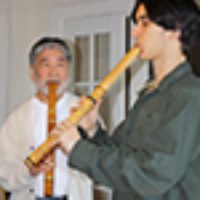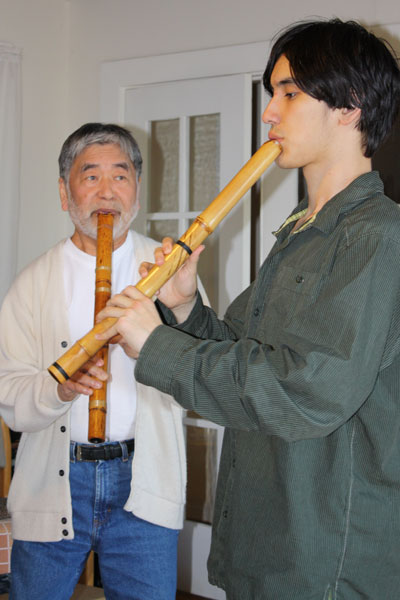
Masayuki Koga
The skakuhachi is a bamboo flute whose origin is in China but migrated to Japan around the sixth century. It was primarily played by Buddhist monks, who used it as a spiritual medium in order to master breathing techniques. The primary genres of shakuhachi are honkyoku (solo), sonkyoku (ensemble), and shinkyoku (more modern music). The Japanese shakuhachi has 3 different sizes, each requring very specialized blowing techniques. Shakuhachi masters are also able to physically remake bamboos to tailor the instrument to produce outher sought after sounds.
Masayuki Koga has dedicated his life to studying, teaching, and performing shakuhachi since the age of 14. He began learning traditional shakuhachi from his father, Kichi Koga, in his hometown of Fukuoka, Japan. His father was taught by the great master Seifu Yoshida, who many consider to be the best shakuhachi player of the early 20th century and who played a critical role in introducing the art to the U.S. Masayuki studied shakuhachi at Meiji University in Tokyo, where he took formal lessons from Kanzan Sakai. He passed the shakuhachi teacher’s license at the age of 19 with the highest score. He was also a member of the Ensemble Nipponia, which won many awards including the highest artistic award from the Japanese Ministry of Education. After moving to the US, Masayuki founded the Japanese Music Institute of America.
As a master artist in ACTA’s Apprenticeship Program in 2014, Masayuki worked with apprentice John Takeshi Morris to develop his mastery of the specialized breathing techniques that set advanced shakuhachi players apart.

